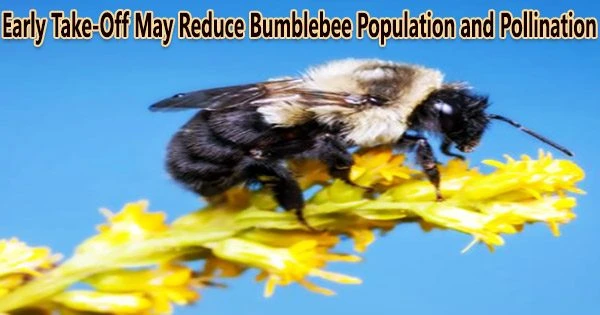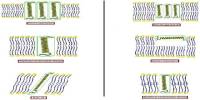Bumblebee queens take their first flight of the season as soon as spring arrives in search of fresh nesting locations. Nevertheless, new research from Sweden’s Lund University indicates that due to a warmer climate and shifting agricultural terrain, they are flying earlier in the year.
“We risk losing additional bumblebee species, and having less pollination of crops and wild plants,” says researcher Maria Blasi Romero at Lund University.
Bumblebee queens emerge from their slumber as soon as spring arrives and the ground begins to thaw. The only bumblebees that survive the winter are queens; unlike workers and males, they spend a few weeks looking for a location to nest so they can lay eggs and establish a colony.
However, rising temperatures mean that they wake up earlier in the year. According to a recent study, initial flights now depart from Sweden on average five days earlier than they did two decades ago.
“Across Sweden, we see that the increased temperatures due to climate change clearly affect when the queens wake up and fly to find a new nest,” says researcher Maria Blasi Romero.
It is not only the temperature that has an impact. The researchers have used the Lund Biological Museum’s collection to look at bumblebee queens from various regions of southern Sweden as far back as 117 years ago. According to this research, the first bumblebee flight occurs in highly farmed landscapes around 14 days earlier than it did more than a century ago.
We see a clear risk that more bumblebee species are at risk of extinction locally, especially the species that usually emerge later in the summer. This could also lead to a decline in the number of bumblebees overall and that would have consequences for the pollination of crops and the functioning of ecosystems. Bumblebees are important pollinators, especially in northern latitudes such as in Scandinavia.
Anna S Persson
Reduced biodiversity with modern agriculture
The decline of grassland habitats including meadows and regularly grazed pastures has been the most significant change in the landscapes under study over the past century. Today, large agricultural fields dominate and often only a few different crops are grown. This has led to a general decline of farmland biodiversity.
A warmer climate, a lack of food during the flight period, and more variable microclimate conditions in today’s agricultural landscape as compared to the more diverse landscapes of earlier times are therefore likely to be the causes of bumblebee queens emerging from their hibernation much earlier now.
The ten bumblebee species that were the subject of the study are now even earlier flyers than they were previously, while the species that emerge later in the season have not altered their flying season. Bumblebees may not acquire enough food if this results in a poor match between their activity periods and those of flowering plants.
“We see a clear risk that more bumblebee species are at risk of extinction locally, especially the species that usually emerge later in the summer. This could also lead to a decline in the number of bumblebees overall and that would have consequences for the pollination of crops and the functioning of ecosystems. Bumblebees are important pollinators, especially in northern latitudes such as in Scandinavia,” says researcher Anna S Persson.
“Climate change and changing land use are two of the biggest threats to biological diversity. Different species respond differently to these changes, so it is important to know more about how and why that is. There are winners and there are losers among species,” says researcher Romain Carrié.
Actions that slow down the effects
The study highlights a number of actions that could lessen pollinator losses as a result of global warming and improve their access to flowering plants. A few examples are:
- Preservation of natural grasslands, such as natural pastures.
- Late season mowing at roadsides, after the flowering period.
- Flower strips and hedges designed in a way that favors pollinators.
- Increased sowing of clover-rich leys, that are partly allowed to flower.
















